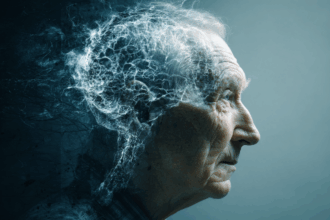Adults under the age of 35 to 45 may face a higher risk of stroke from less conventional risk factors like migraines than from traditional ones such as hypertension. This insight comes from recent research in the journal Circulation: Cardiovascular Quality and Outcomes, endorsed by the American Heart Association. Typically, strokes are attributed to well-known risk factors, including high blood pressure, elevated cholesterol levels, Type 2 diabetes, smoking habits, obesity, sedentary lifestyle, alcohol misuse, or coronary artery disease. However, current studies have indicated a rising occurrence of strokes in younger adults who do not have these risk factors.
Michelle Leppert, M.D., M.S., M.B.A., FAHA, an assistant professor of neurology at the University of Colorado School of Medicine in Aurora, Colorado, and the lead author of the study, expressed a desire to pinpoint the primary risk factors contributing to stroke risk among younger adults. Through the analysis of health insurance claim data from Colorado, the research team compared over 2,600 individuals who had experienced strokes with more than 7,800 who had not, aiming to identify the risk factors most commonly leading to strokes.
The findings revealed a significant association between unconventional stroke risk factors — such as migraines, blood clotting disorders, kidney failure, autoimmune diseases, or cancer — and stroke occurrence in individuals aged 18 to 44. This association was even more pronounced in those younger than 35. The study highlighted that:
– In the 18 to 34 age group, strokes linked to nontraditional risk factors were more prevalent (31% in men and about 43% in women) than those related to traditional risk factors (about 25% in men and more than 33% in women).
– Migraines emerged as the most significant nontraditional stroke risk factor in the 18 to 34 age bracket, contributing to 20% of strokes in men and nearly 35% in women.
– The influence of traditional stroke risk factors was most notable among adults aged 35 to 44, being associated with nearly 33% of strokes in men and about 40% in women.
– For individuals aged 45 to 55, nontraditional risk factors were responsible for over 19% of strokes in men and nearly 28% in women, with high blood pressure being the primary traditional risk factor in this age group, accounting for 28% of strokes in men and about 27% in women.
– The presence of each additional traditional or nontraditional risk factor was linked to an increased stroke risk across all sex and age categories.
Leppert emphasized the importance of not overlooking nontraditional stroke risk factors in favour of focusing solely on traditional ones, as both types are crucial in young people’s stroke development. The younger an individual at the time of their stroke, the more likely it is to be attributed to a nontraditional risk factor, necessitating a deeper understanding of these factors to devise targeted prevention strategies.
The study’s findings were unexpected, revealing that nontraditional risk factors hold equal importance to traditional ones in young adults’ stroke development. Astonishing was the significant role of migraines in stroke occurrence. This study, pioneering in highlighting the extent of stroke risk associated with migraines, utilized data from the Colorado All Payer Claims Database, covering 2012-2019, focusing on ischemic strokes caused by blood flow obstruction to the brain.
Despite its comprehensive data, the study faced limitations, such as potential inaccuracies in risk factor documentation and the absence of race and ethnicity information for many participants. Additionally, because the research was conducted in areas over a mile above sea level, its findings might only apply sometimes. This study underscores the need for heightened awareness and research into both traditional and nontraditional stroke risk factors among younger populations to understand better and mitigate the risk of stroke across all demographics.
More information: Michelle H. Leppert et al, Association of Traditional and Nontraditional Risk Factors in the Development of Strokes Among Young Adults by Sex and Age Group: A Retrospective Case-Control Study, Circulation. DOI: 10.1007/s00394-023-03123-x
Journal information: Circulation Provided by American Heart Association








